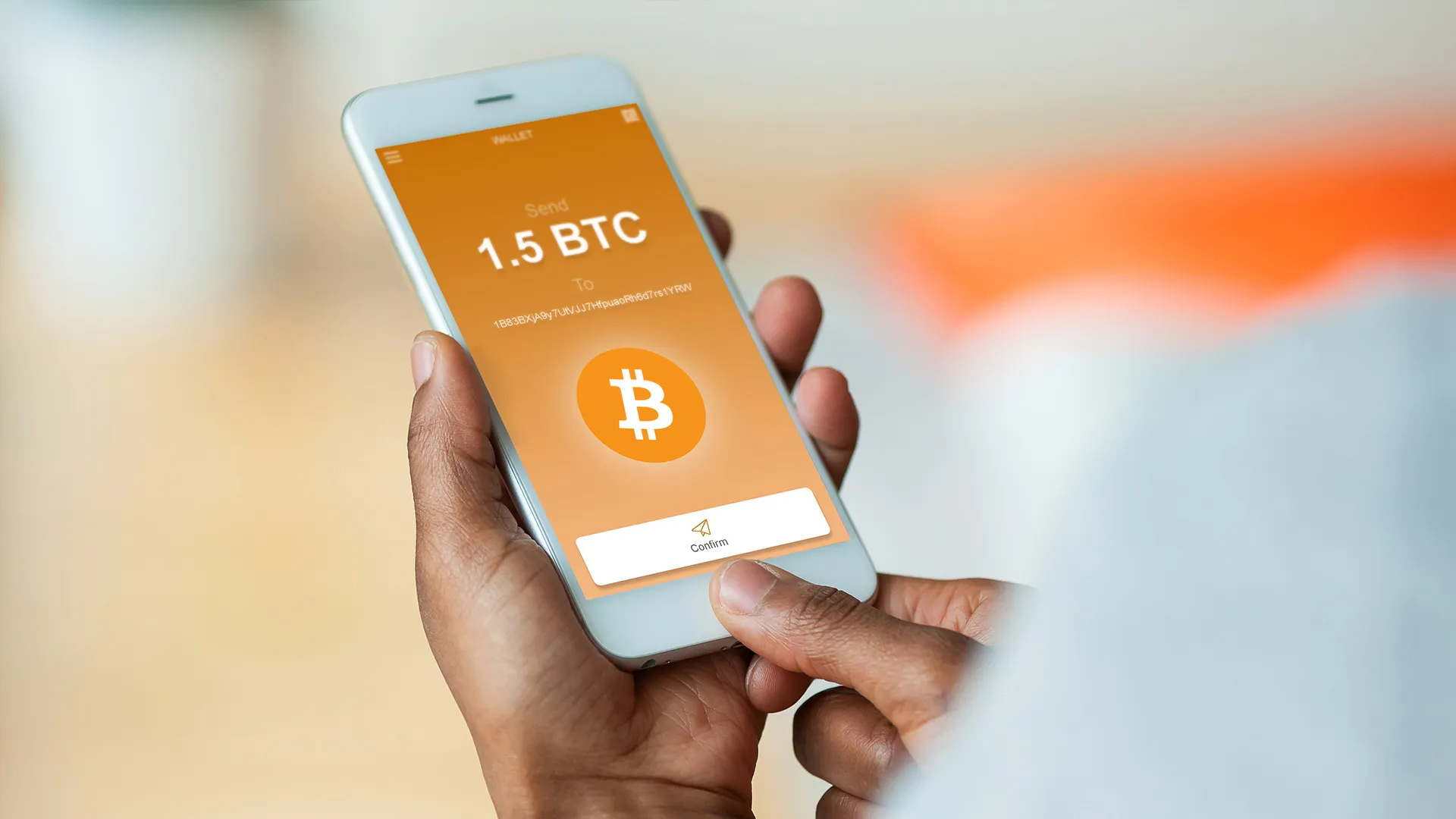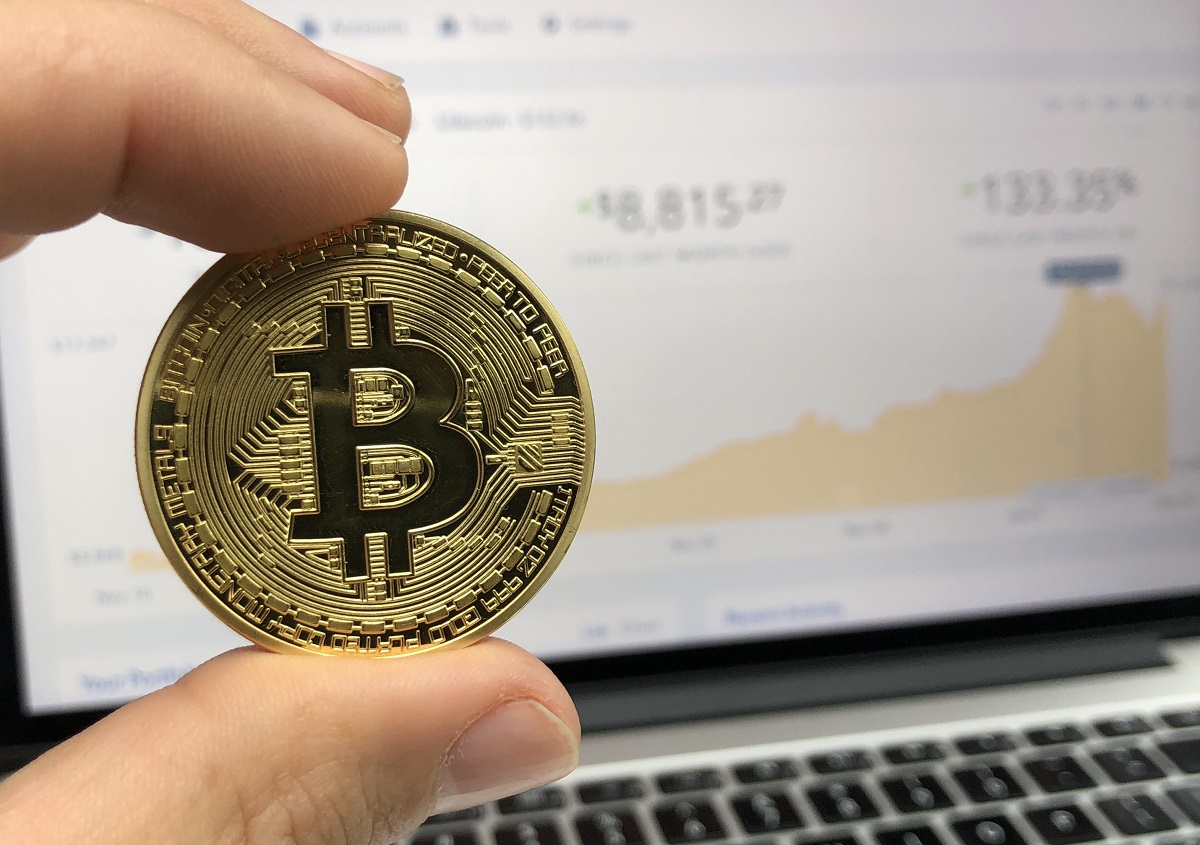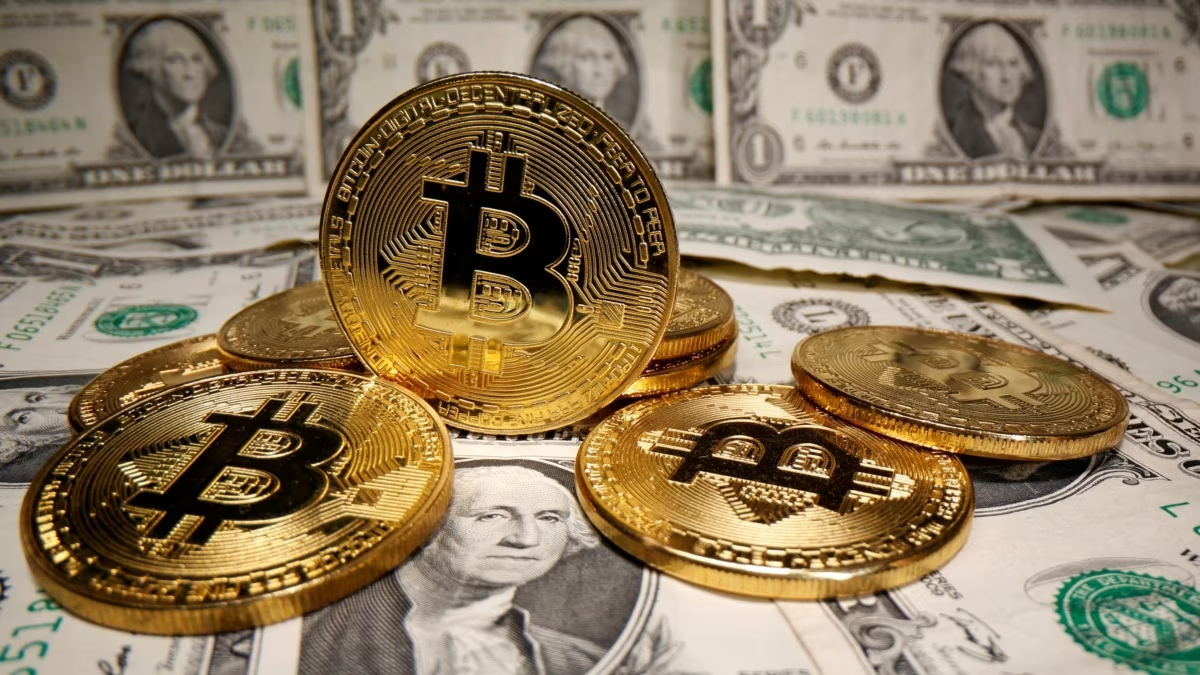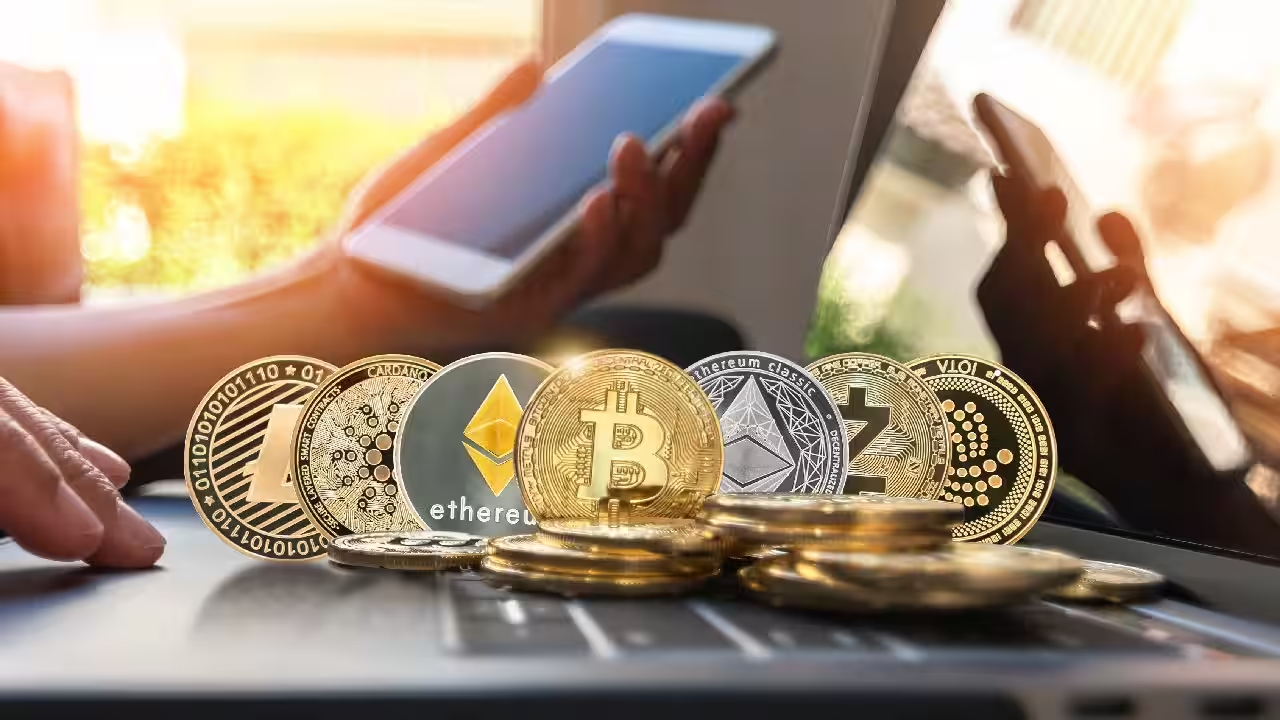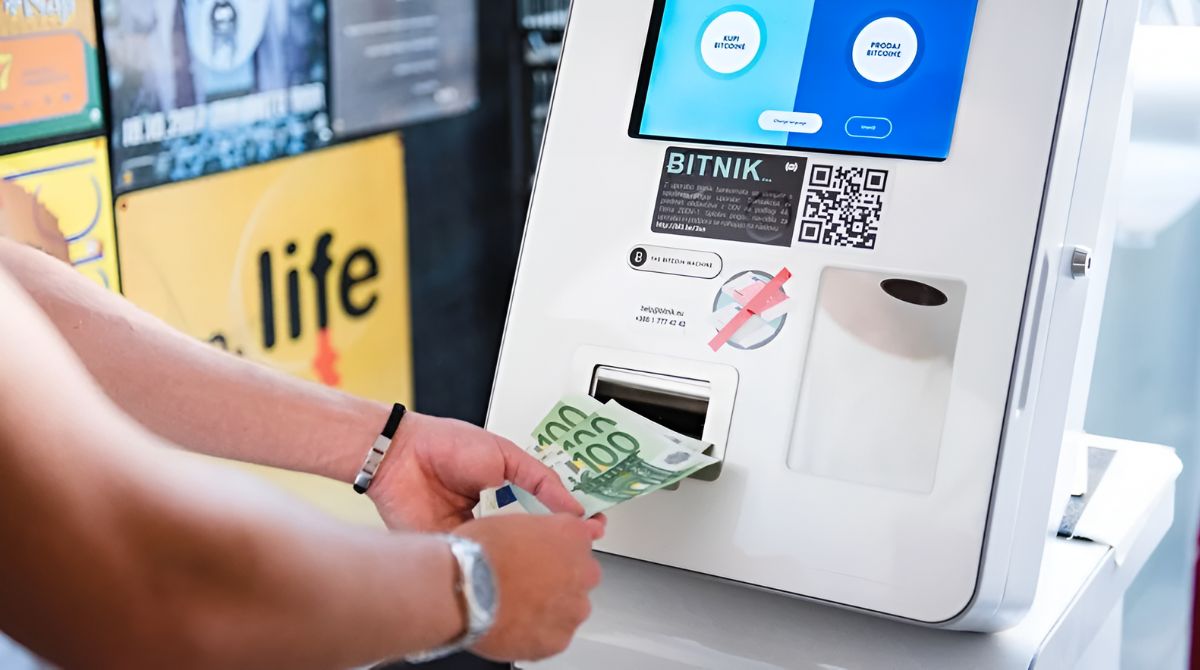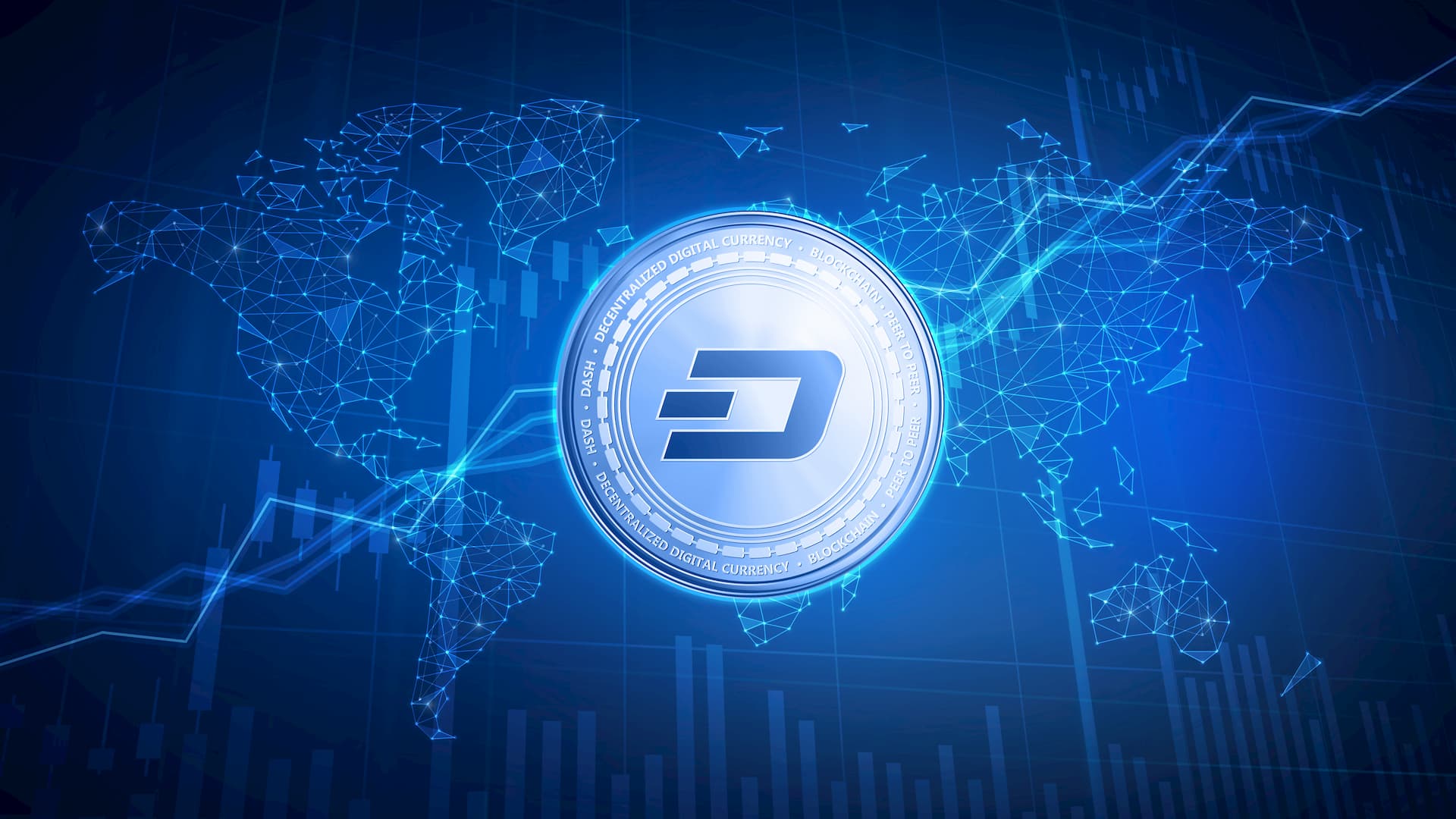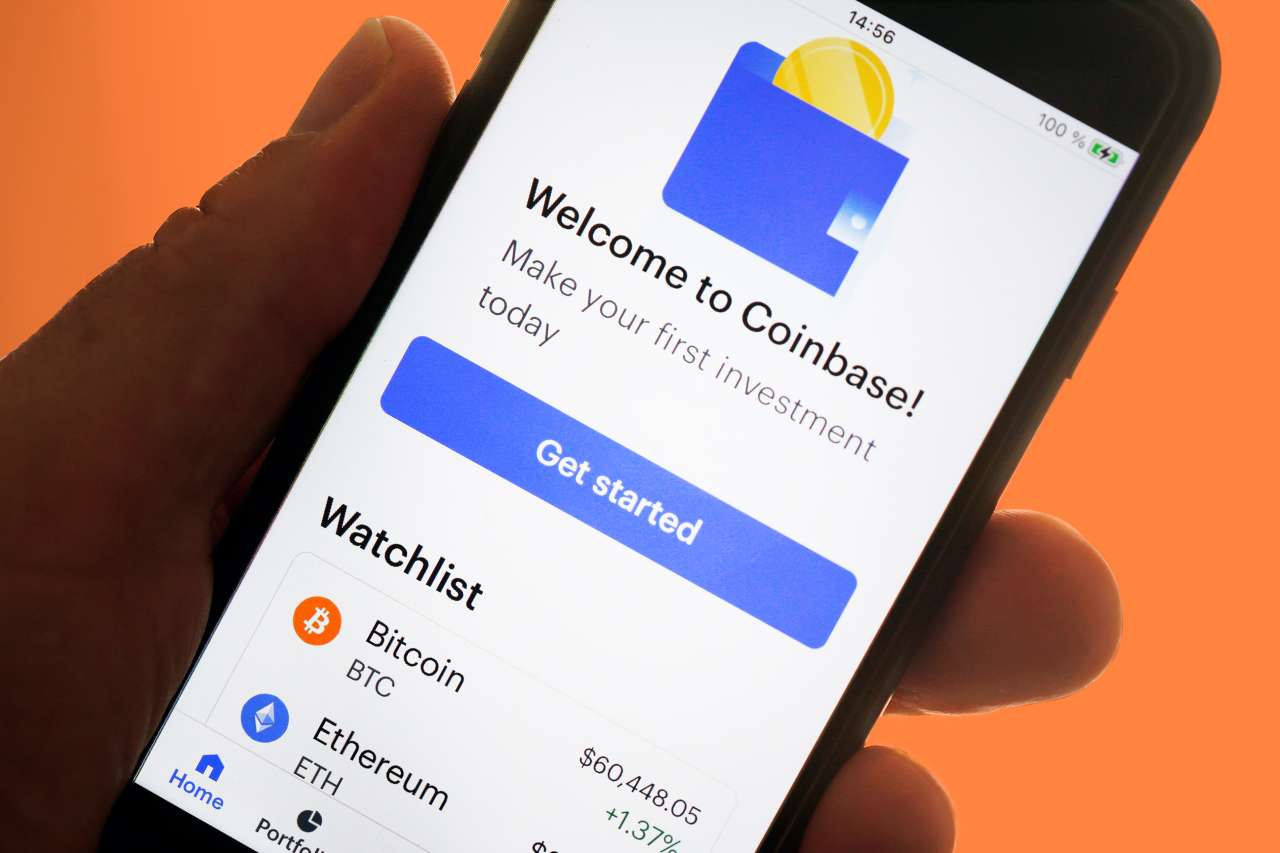Introduction
Welcome to the world of digital currency! In today’s digital age, the way we handle money and make transactions has evolved significantly. Gone are the days of relying solely on physical cash and traditional banking systems. Digital currency, also known as cryptocurrency, has emerged as a revolutionary form of currency that offers numerous advantages over traditional payment methods.
Digital currency is a type of virtual currency that utilizes cryptography for secure transactions and operates independently of a central bank. It allows for instant and borderless transactions, eliminates the need for intermediaries, and provides a level of privacy that traditional banking systems cannot match. With the rise in popularity of digital currencies like Bitcoin, Ethereum, and Litecoin, more and more people are embracing this decentralized form of money.
So, why would you want to send digital currency? There are myriad reasons why individuals and businesses choose to send and receive digital currency. Perhaps you want to pay for goods or services online, send money to a friend or family member in another country, or maybe you’re investing in digital assets and need to transfer funds from one wallet to another. Whatever the reason, learning how to send digital currency is a valuable skill to have in today’s digital economy.
When it comes to digital currency, there are various types to choose from. Bitcoin is the most well-known and widely accepted digital currency, but there are also alternative coins, such as Ethereum, Ripple, and Litecoin, each with its own unique features and use cases. Depending on your needs and preferences, you can choose the digital currency that best suits your requirements.
Now that you have a basic understanding of what digital currency is and why you might want to send it, the next step is to set up a digital currency wallet. This wallet will serve as your digital “bank account” where you can securely store and manage your digital assets. In the next section, we will explore the process of setting up a digital currency wallet and understanding wallet addresses.
What is digital currency?
Digital currency, also known as cryptocurrency, is a form of virtual or digital money that utilizes cryptography for secure transactions and operates independently of a central bank. Unlike traditional currencies issued by governments, digital currency has no physical form but exists purely in a digital format.
At its core, digital currency is based on blockchain technology – a decentralized and transparent ledger that records all transactions across a network of computers. This ensures the security and integrity of transactions, as well as prevents fraud and double-spending.
One of the primary characteristics of digital currency is its decentralization. Traditional currencies are controlled and regulated by central banks or monetary authorities. In contrast, digital currencies operate on a peer-to-peer network, where transactions are validated by multiple participants called miners. This decentralized nature makes digital currency resistant to censorship and government interference.
Another essential aspect of digital currency is its security and privacy features. Cryptography is used to secure transactions and control the creation of new units. This means that digital currency transactions are highly secure and cannot be easily manipulated or counterfeited.
Bitcoin, the first and most well-known digital currency, was created in 2009 by an anonymous person or group of individuals using the pseudonym Satoshi Nakamoto. Since then, thousands of other digital currencies, commonly referred to as altcoins, have been developed.
Each digital currency operates on its unique set of rules and protocols. Bitcoin, for example, is built on a proof-of-work consensus mechanism, where miners solve complex mathematical problems to validate and add transactions to the blockchain. Other digital currencies like Ethereum have introduced smart contract functionality, allowing developers to build decentralized applications (DApps) on top of their blockchain.
One of the advantages of digital currency is the potential for financial inclusivity. Traditional banking systems may be inaccessible to individuals in underbanked or unbanked regions, but digital currencies can be accessed by anyone with an internet connection. This has the potential to empower people and drive financial inclusion on a global scale.
However, it’s important to note that digital currency is not without its challenges. Price volatility, regulatory uncertainties, and security concerns are some of the factors that can impact the adoption and stability of digital currencies. Additionally, the complex nature of digital currency technology requires users to take extra precautions to ensure the security of their digital assets.
In the next section, we will delve into the various reasons why individuals and businesses choose to send digital currency and explore the different types of digital currencies available.
Why send digital currency?
The ability to send digital currency offers numerous advantages over traditional payment methods, making it an attractive option for individuals and businesses alike. Here are some compelling reasons why you might want to send digital currency:
1. Instant transactions: Sending digital currency can be incredibly fast. Unlike traditional bank transfers that may take days to process, digital currency transactions can be completed within minutes, or even seconds. This makes it ideal for time-sensitive transactions or when immediate settlement is required.
2. Borderless transactions: Digital currency is not tied to any specific country or region. It can be sent and received globally without the need for intermediaries or foreign exchange conversions. This makes it convenient and cost-effective for international transactions, particularly for remittances or cross-border business transactions.
3. Lower transaction fees: Traditional financial institutions often charge hefty fees for international transfers or currency conversions. In contrast, digital currency transactions typically have lower fees, especially for larger transactions. This can result in significant cost savings, especially for businesses that deal with frequent and high-value transactions.
4. Financial privacy: Digital currency transactions offer a level of privacy that is difficult to achieve with traditional banking systems. While transactions are recorded on the blockchain, the identities of the parties involved can remain pseudonymous. This can be appealing to individuals who value their financial privacy and prefer to keep their transactions discreet.
5. Access to emerging markets: Digital currency can provide access to emerging markets where traditional banking infrastructure is lacking. In regions with limited banking services, digital currency can enable financial inclusion and empower individuals to participate in the global economy by providing them with a secure and accessible means of transacting.
6. Investment opportunities: Sending digital currency allows you to take advantage of the investment opportunities presented by the rapidly growing digital currency market. Whether you’re investing in Bitcoin, Ethereum, or other digital assets, being able to send and receive digital currency is essential for buying, selling, and transferring funds between different wallets and exchanges.
7. Innovative applications: Digital currency enables the development of innovative applications and technologies. With digital currency, you can participate in decentralized finance (DeFi) platforms, earn interest on your holdings, trade on decentralized exchanges, and interact with smart contracts. These new possibilities can open up exciting opportunities for individuals and businesses in various industries.
With these advantages in mind, it’s no wonder that the popularity of digital currency continues to rise. In the next section, we will explore the different types of digital currencies available and provide insights into setting up a digital currency wallet.
Different types of digital currency
The world of digital currency is diverse, with various types of cryptocurrencies available to choose from. While Bitcoin is the most well-known and widely adopted digital currency, there are numerous alternative coins, also known as altcoins, that offer different features and use cases. Here are some of the different types of digital currency you may come across:
1. Bitcoin (BTC): Bitcoin is the pioneering digital currency that started it all. It operates on a decentralized network and is known for its robust security features and limited supply. Bitcoin is often seen as a store of value, similar to digital gold, and is widely accepted as a form of payment by various merchants and online platforms.
2. Ethereum (ETH): Ethereum is a programmable, decentralized platform that enables the development of smart contracts and decentralized applications (DApps). It introduced the concept of blockchain beyond just being a digital currency and opened doors to a whole range of innovative applications, such as decentralized finance (DeFi) and non-fungible tokens (NFTs).
3. Ripple (XRP): Ripple is a unique digital currency that focuses on facilitating fast, low-cost international money transfers. Its primary goal is to serve as a bridge currency for transferring value between different fiat currencies and has gained traction among financial institutions and banks for its efficient cross-border transfer capabilities.
4. Litecoin (LTC): Created in 2011 as a “lite” version of Bitcoin, Litecoin offers faster transaction confirmations and a different mining algorithm. It is often seen as a complementary digital currency to Bitcoin and has gained popularity for its lower transaction fees and quicker block generation times.
5. Cardano (ADA): Cardano is a blockchain platform built with a focus on academic research and peer-reviewed protocols. It aims to provide a secure and sustainable platform for the development of decentralized applications, offering advanced features like proof-of-stake (PoS) consensus mechanism and smart contract functionality.
6. Stellar (XLM): Stellar is a digital currency platform designed to facilitate fast, low-cost money transfers, particularly for micro-transactions and remittances. It aims to bridge the gap between traditional financial systems and digital currencies, making it accessible to individuals and businesses worldwide.
7. Binance Coin (BNB): Binance Coin is the native cryptocurrency of the Binance exchange, one of the largest digital currency exchanges in the world. BNB is primarily used to pay for transaction fees on the Binance platform and offers additional benefits to holders, such as discounted trading fees and participation in token sales.
These are just a few examples of the many digital currencies available today. Each digital currency has its unique features, use cases, and communities supporting it. When choosing a digital currency, it’s essential to consider factors such as its market reputation, technological advancements, community involvement, and the purpose it serves in the overall digital currency ecosystem.
In the next section, we will guide you through the process of setting up a digital currency wallet, which is necessary for sending and receiving digital currency securely.
Setting up a digital currency wallet
A digital currency wallet is a software application that allows you to securely store, manage, and interact with your digital assets. It serves as a digital equivalent of a physical wallet, providing you with a unique address to send and receive digital currency. Here’s a step-by-step guide to setting up a digital currency wallet:
1. Research wallet options: Start by researching different wallet options available for the specific digital currency you want to store. There are various types of wallets, including software wallets, hardware wallets, and online wallets. Each type has its pros and cons in terms of security and convenience.
2. Choose a wallet: Select a wallet that best suits your needs and preferences. Consider factors such as security features, ease of use, compatibility with your chosen digital currency, and the reputation of the wallet provider. Be sure to download the wallet software from the official website or a trusted source to avoid the risk of malware or phishing attacks.
3. Install the wallet: Once you’ve chosen a wallet, download and install the software on your device. Follow the installation instructions provided by the wallet provider. Take note of any backup instructions or recovery phrases provided during the setup process. These will be crucial in case you need to restore your wallet or access it from another device.
4. Create a new wallet: After installing the wallet, you’ll usually have the option to create a new wallet. This involves generating a new wallet address, which serves as your unique identifier in the digital currency network. The wallet software will guide you through the process, and it’s essential to follow the instructions carefully to ensure the security of your wallet.
5. Secure your wallet: Take steps to secure your wallet by setting a strong and unique password. Enable any additional security features offered by the wallet, such as two-factor authentication (2FA) or biometric authentication. Consider encrypting your wallet if the option is available to provide an extra layer of protection for your digital assets.
6. Backup your wallet: Backing up your wallet is crucial to prevent the loss of your funds in case of device failure or accidental deletion. Most wallet software will provide an option to export or backup your wallet. Follow the provided instructions to create a secure backup of your wallet, either in the form of a recovery phrase or a backup file. Store the backup in a safe and secure location, preferably offline or in multiple locations, such as a secure external hard drive or a hardware wallet.
7. Test your wallet: Before sending a significant amount of digital currency to your newly created wallet, it’s a good practice to test it with a small transaction. Send a small amount of digital currency from another wallet or an exchange platform to your wallet address. Verify that the transaction is successful and that you can access and view the funds in your wallet.
Remember, the security of your digital currency wallet is of utmost importance. Keep your wallet software and device updated with the latest security patches and avoid sharing sensitive information or wallet details with anyone. Regularly review and follow best practices for securing your digital assets to minimize the risk of hacks or unauthorized access.
Now that you have set up your digital currency wallet and secured it, the next step is to understand wallet addresses. In the next section, we will explain what wallet addresses are and how they are used in digital currency transactions.
Understanding wallet addresses
A wallet address is a unique identifier associated with your digital currency wallet. It functions as a destination where you can receive funds and serves as the recipient’s address for sending digital currency transactions. Understanding how wallet addresses work is essential for securely sending and receiving digital currency. Here’s what you need to know:
1. Format and structure: Wallet addresses are a combination of letters, numbers, and sometimes special characters. The format and structure of a wallet address vary depending on the specific digital currency. For example, Bitcoin addresses start with the number “1” or “3”, followed by a series of alphanumeric characters.
2. Public and private keys: A wallet address is derived from a pair of cryptographic keys – a public key and a private key. The public key is used for receiving funds and generating the wallet address, while the private key is kept secret and is used to authorize and sign transactions.
3. Security and privacy: Wallet addresses are designed to be secure and provide a level of privacy. While transactions made using digital currency are recorded on the blockchain and are visible to the public, the wallet addresses themselves do not reveal the identities of the parties involved. This pseudonymity helps protect the privacy of users.
4. One-time use: In most cases, it is recommended to generate a new wallet address for each transaction. This practice enhances security, as it reduces the risk of someone associating multiple transactions with a single address. It also helps protect your privacy by not revealing the total balance of your wallet to the public.
5. QR codes: Wallet addresses are often represented as QR codes, which are scannable by mobile devices. QR codes make it convenient to share wallet addresses with others for receiving payments. By scanning the QR code, the sender can automatically populate the recipient’s wallet address without the need to type it manually.
6. Verifying addresses: When receiving digital currency, it’s crucial to double-check the accuracy of the wallet addresses. Wallet addresses are case-sensitive, so even a slight mistake can result in the loss of funds. Always verify and compare the wallet address provided by the sender before initiating a transaction.
7. Be cautious with sharing addresses: While wallet addresses do not reveal personal information, it is still important to be cautious when sharing your wallet address publicly or with unknown individuals. Sharing a wallet address does not provide access to your funds, but it can be associated with your identity in certain situations.
Understanding how wallet addresses work is essential for securely transacting with digital currency. By using unique wallet addresses for each transaction and employing good security practices, you can enhance the privacy and security of your digital assets.
In the next section, we will guide you through choosing the right platform to send digital currency, ensuring a smooth and reliable transaction process.
Choosing the right platform to send digital currency
When it comes to sending digital currency, choosing the right platform is crucial for a seamless and secure transaction. With numerous platforms available in the market, it’s essential to consider certain factors to ensure that you select a reliable and trustworthy platform. Here are some key considerations when choosing a platform to send digital currency:
1. Security: Security should be a top priority when selecting a platform. Look for platforms that have robust security measures in place, such as two-factor authentication, encryption, and cold storage for funds. Additionally, check whether the platform has a history of handling security incidents responsibly and promptly.
2. Supported digital currencies: Ensure that the platform supports the specific digital currency you want to send. Not all platforms support all types of digital currencies, so it’s important to check their list of supported currencies before proceeding.
3. User interface and experience: Consider the user interface and user experience offered by the platform. A user-friendly interface, intuitive navigation, and clear instructions can make the process of sending digital currency much easier, especially for beginners.
4. Transaction fees: Different platforms may have varying transaction fee structures. Compare the transaction fees across different platforms, especially if you frequently send digital currency. Look for platforms that offer competitive fees without compromising on security and reliability.
5. Liquidity and trading volume: If you intend to send digital currency for trading purposes, it’s important to choose a platform with high liquidity and trading volume. This ensures that you can execute trades quickly and at the desired price, without facing significant delays or unfavorable market conditions.
6. Reputation and reviews: Research the reputation of the platform and read reviews from other users. Look for feedback regarding the platform’s reliability, customer support, ease of use, and response to any issues or disputes. This can provide valuable insights into the platform’s overall performance and the experiences of other users.
7. Customer support: Consider the level of customer support provided by the platform. Look for platforms that offer responsive and timely customer support through multiple channels, such as email, live chat, or phone. Quick and reliable support can be crucial in case of any issues or inquiries during the transaction process.
8. Regulatory compliance: Ensure that the platform complies with relevant regulations and has proper licensing and registrations in your jurisdiction. This helps ensure that the platform follows industry best practices and provides a secure environment for sending digital currency.
9. Availability and accessibility: Check whether the platform is available in your region and whether it supports the payment methods you prefer. Some platforms may have restrictions or limitations based on geographical location, so it’s important to confirm their availability before creating an account.
By carefully considering these factors, you can choose a platform that meets your specific needs and preferences when it comes to sending digital currency. Remember to conduct thorough research, compare different platforms, and take your time to make an informed decision.
In the next section, we will provide you with a step-by-step guide to sending digital currency, ensuring a smooth transaction process from start to finish.
Step-by-step guide to sending digital currency
Sending digital currency is relatively straightforward, but it’s important to follow the correct steps to ensure a secure and successful transaction. Here is a step-by-step guide to help you send digital currency:
Step 1: Choose the right platform: Select a reputable and secure platform that supports the digital currency you want to send. Ensure that you have created an account on the platform and have your wallet set up.
Step 2: Access your digital currency wallet: Log in to your digital currency wallet. This can be a software wallet installed on your device, a hardware wallet, or an online wallet provided by the platform.
Step 3: Verify your wallet balance: Before sending any digital currency, verify that you have sufficient balance in your wallet to cover the transaction. Check the available balance in your wallet to ensure you have the necessary funds.
Step 4: Enter the recipient’s wallet address: Obtain the wallet address of the recipient to whom you want to send the digital currency. Make sure you copy the address correctly to avoid any errors. Double-check the address to ensure its accuracy.
Step 5: Enter the amount to send: Specify the amount of digital currency you wish to send to the recipient. Ensure that you enter the amount accurately, taking note of any transaction fees that may apply.
Step 6: Review the transaction details: Take a moment to review the transaction details, including the recipient’s wallet address and the amount to send. Verify that all the information is correct before proceeding with the transaction.
Step 7: Confirm the transaction: Once you are satisfied with the transaction details, click on the “send” or “confirm” button to initiate the transaction. Depending on the platform, you may need to provide additional authentication, such as entering your password or confirming through email or SMS verification.
Step 8: Wait for confirmation: After confirming the transaction, you will need to wait for confirmation on the blockchain network. The time for confirmation may vary depending on the digital currency and network congestion. Once the transaction is confirmed, the digital currency will be sent to the recipient’s wallet address.
Step 9: Check the transaction status: You can track the progress of your transaction by viewing its status on the blockchain explorer or through your wallet software. This allows you to see the number of confirmations, ensuring that the transaction is successfully completed.
Step 10: Inform the recipient: Once the transaction is confirmed, it’s a good practice to inform the recipient that you have sent the digital currency. You can provide them with the transaction ID or a link to the blockchain explorer, allowing them to verify the transaction themselves.
By following these step-by-step instructions, you can send digital currency safely and efficiently. Remember to always double-check wallet addresses, review transaction details, and exercise caution when conducting any financial transactions.
In the next section, we will provide you with valuable tips for ensuring a secure transaction when sending digital currency.
Tips for ensuring a secure transaction
When sending digital currency, it’s essential to prioritize security to protect your funds and personal information. Here are some valuable tips to ensure a secure transaction:
1. Use a reputable platform: Choose a trusted and reputable platform for sending digital currency. Conduct thorough research, read reviews, and ensure the platform has a strong track record in terms of security and user satisfaction.
2. Verify wallet addresses: Double-check the accuracy of the recipient’s wallet address before initiating the transaction. Ensure that you have copied the address correctly to prevent sending funds to the wrong recipient.
3. Update your wallet software: Keep your digital currency wallet software up to date with the latest security patches and features. Developers frequently release updates to address vulnerabilities, so regularly check for and install updates to enhance the security of your wallet.
4. Enable two-factor authentication (2FA): Enable 2FA on your wallet account, if available. This adds an extra layer of security by requiring an additional verification step to access your account, such as a one-time password or biometric authentication.
5. Use strong, unique passwords: Choose strong, complex passwords for your wallet accounts and avoid reusing passwords across multiple platforms. Consider using a password manager to securely store and manage your passwords.
6. Keep your private keys offline: If you’re using a software wallet, store your private keys offline in a secure location. This protects them from potential hacking attempts or online threats. Consider using a hardware wallet for the highest level of security.
7. Beware of phishing attempts: Be cautious of phishing attempts and avoid clicking on suspicious links or providing your wallet details on untrusted websites or emails. Always access your wallet through official channels.
8. Regularly backup your wallet: Maintain regular backups of your wallet to protect against data loss or device failure. Store backups in secure offline locations, such as encrypted external drives or hardware wallets.
9. Stay informed: Stay updated on the latest security practices and news in the digital currency space. Follow reputable sources and forums to stay informed about potential security risks and best practices.
10. Educate yourself: Take the time to educate yourself about digital currency security, including common scams and best practices. Understanding the risks and how to protect yourself can help you make informed decisions and avoid potential pitfalls.
By following these tips, you can enhance the security of your digital currency transactions and protect your funds from potential threats. Remember, security should always be a top priority when dealing with digital currency.
In the next section, we will discuss some common mistakes to avoid when sending digital currency, helping you have a smooth and error-free transaction experience.
Common mistakes to avoid when sending digital currency
When sending digital currency, it’s important to be cautious and avoid common mistakes that can lead to irreversible losses or security risks. By being mindful of these potential pitfalls, you can ensure a smooth and error-free transaction. Here are some common mistakes to avoid:
1. Typing errors: One of the most common mistakes is making typing errors when entering the recipient’s wallet address. Always double-check the address to ensure its accuracy. A small mistake can lead to the loss of funds, as transactions on the blockchain network cannot be reversed.
2. Sending to the wrong type of wallet: Different digital currencies have different wallet formats and addresses. Make sure you send the correct digital currency to its corresponding wallet. Sending a digital currency to an incompatible wallet can result in the loss of funds.
3. Ignoring transaction fees: Neglecting to consider transaction fees can result in unexpected costs. Always be aware of the associated transaction fees and factor them into your calculations when sending digital currency. Failure to do so may result in the recipient receiving a lesser amount than intended.
4. Not verifying transaction details: Before confirming the transaction, review all the details, including the recipient’s wallet address and the amount being sent. Verifying the accuracy of the information can prevent costly mistakes.
5. Falling for scams or phishing attempts: Be cautious of scams or phishing attempts that aim to deceive users into providing their wallet details or private keys. Avoid clicking on suspicious links, and only access your wallet through official channels. Be skeptical of unsolicited offers or requests for your digital currency.
6. Using insecure or compromised devices: Sending digital currency from insecure or compromised devices increases the risk of unauthorized access to your funds. Ensure that your devices have up-to-date antivirus software and avoid sending digital currency on public or unsecured networks.
7. Not backing up your wallet: Failure to regularly back up your wallet puts your funds at risk. Accidental loss, theft, or hardware failure can result in the permanent loss of your digital currency if you do not have a backup. Keep multiple backups in secure, offline locations to safeguard against such events.
8. Not being mindful of exchange withdrawal limits: If you are sending digital currency from an exchange platform, familiarize yourself with any withdrawal limits imposed by the platform. Trying to send an amount that exceeds the withdrawal limit can result in transaction failures or delays.
9. Rushing through the transaction process: Take your time when sending digital currency. Rushing through the process increases the likelihood of making mistakes. Carefully review the transaction details and ensure you have entered all the information correctly before confirming the transaction.
10. Not seeking professional advice: If you are new to sending digital currency or dealing with a large transaction, consider seeking professional advice. Consulting experts in the field can help you navigate through the process and ensure a smooth transaction experience.
By avoiding these common mistakes, you can minimize the risks associated with sending digital currency and ensure a secure and successful transaction. Remember, always exercise caution and stay vigilant when engaging in any digital currency-related activities.
In the next section, we will wrap up the article with a summary and key takeaways.
Conclusion
As the world becomes increasingly digital, the use of digital currency is gaining momentum. Sending digital currency offers numerous advantages, including instant transactions, borderless transfers, and lower transaction fees compared to traditional payment methods. By understanding the different types of digital currencies and setting up a secure wallet, you can participate in this evolving financial ecosystem.
Choosing the right platform to send digital currency is essential. Consider factors such as security, supported digital currencies, user experience, and transaction fees. Prioritize security by verifying wallet addresses, keeping software up to date, enabling two-factor authentication, and being cautious of phishing attempts.
Following a step-by-step guide and avoiding common mistakes can help ensure a successful and smooth transaction. Double-check wallet addresses, review transaction details, and be mindful of transaction fees.
As you engage in sending digital currency, keep in mind the importance of education and staying informed. Stay updated on the latest security practices and news in the digital currency space to protect your funds and make informed decisions.
By taking these precautions, you can confidently send digital currency, whether it’s for personal transactions, investment purposes, or participating in innovative applications. As with any financial activity, always exercise caution, do your due diligence, and consult professionals if needed.
Embrace the possibilities of digital currency and navigate this exciting landscape with confidence. Stay informed, be security-conscious, and enjoy the benefits of a decentralized financial system that is changing the way we transact in the modern world.







